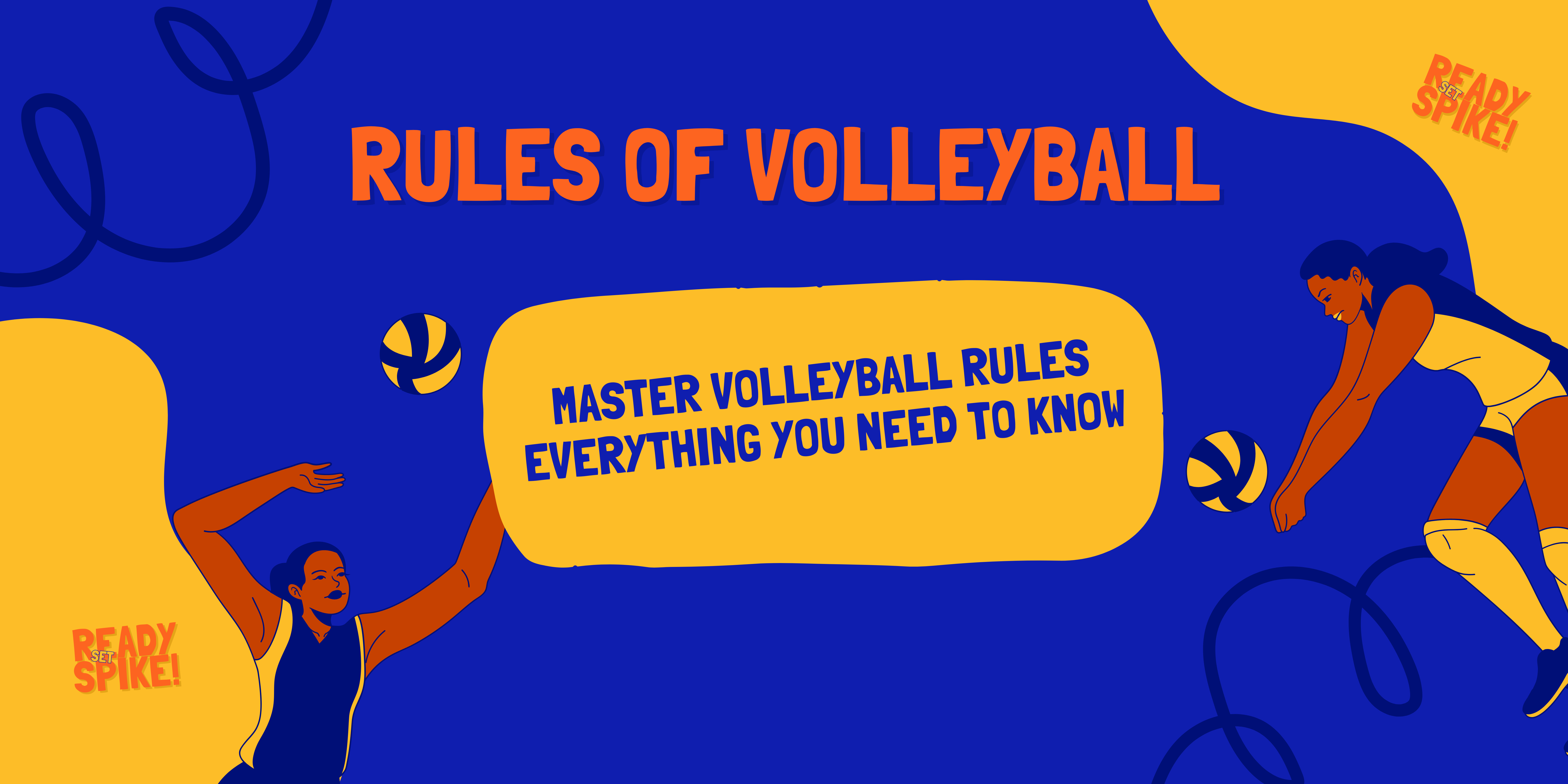Volleyball
Volleyball is a dynamic and enjoyable sport played by millions worldwide. Understanding the rules of volleyball is essential for anyone looking to get the most out of the game, whether you’re a player, coach, or fan. From the dimensions of the court to the specific roles of each player, knowing the rules ensures fair play and enhances the overall experience. This post will guide you through the essential rules and measurements of volleyball, making it easier for beginners and enthusiasts to appreciate and enjoy this exciting game.
History of Volleyball :
How It Started–
- 1895: William G. Morgan invented volleyball in the USA. He worked at the YMCA and wanted to create a new game for older adults. He is also called Father of volleyball game.
- First Name: The game was originally called “Mintonette.”
- In 1896: Dr. Alfred T. Hall Stead named this game Volleyball.
How It Grew–
- Early 1900s: The game spread to other countries like Canada and Cuba.
- In 1900: volleyball was a 21-point game in which the height of the net was 2.13 meters.
- In 1912: the length of the court was 18.28 meters, width was 10.66 meters and width of the net was .91 meters.
- 1916- Rules were issued jointly by the YMCA and the National Collegiate Athletic Association (NCAA).
- In 1917 – the height of the net was 2.44 metres.
- In 1918 AD– the game started being 15 points in which the number of players was 6.Making of center line started in 1921 AD.
- In 1922 AD– there was a rule that a team could touch the ball three times in its own court.
- In 1923 – AD, the length of the field was 18.28 meters.
- First World Cup Championship (Men) – 1949 Prague (Czechoslovakia)
- First World Cup Championship (Women) – 1952 Moscow (Russia USSR)
- First Arjuna Award was given to – A. Palani Swami- 1961
- First Dronacharya Award was given to – A. Ramanna Rao- 1990
- Establishment of Federation International de Volleyball (FIVB)-1947
- Establishment of Asian Volleyball Confederation (AVC)-1952
- Volleyball Included in Olympic Games – 1964 Tokyo (Japan)
- Volleyball Included in the Asian Games – 1958 Tokyo (Japan)
- Volleyball Came to India in 1922, started by YMCA
- In 1936, the Indian Olympic Association (IOA) organized the first Interstate Championship.
- Establishment of Volleyball Federation of India (VFI)-1951
Measurement and Dimension of Volleyball
Court-

- Court Length- 18m
- Court Width-9m
- Distance Between Center Line To Attack Line-3m
- Attack Line To End Line-6m
- Line Width- 5cm


Volleyball Net and Post-

Antenna in Volleyball-
The antenna in volleyball is made of a flexible rod whose length is 1.80 meters and diameter is 1 centimeter. The antenna is of two colors, red and white. 10 centimeters is red and 10 centimeters is white.
Ball–
Weight of ball- 260-280g
Circumference- 65-67cm
Rules of Volleyball :
Goal of the Game
The goal is to hit the ball over the net so that it lands in the other team’s court. The other team tries to do the same. Points are scored when the other team can’t return the ball or makes a mistake.
Teams-
- Indoor Volleyball: 6 players on each team.
- Beach Volleyball: 2 players on each team.
Service Rule–
Serve: The game starts with a serve. One player hits the ball over the net to the other team. The service of the first and fifth sets is determined by a toss. In other sets (2 to 4 sets) the serve is decided by the team opposite to the one who served first in the previous set. Service has to be done within 8 seconds of the whistle.
Playing the Game-
- Hits: Each team can hit the ball up to 3 times before it goes over the net.
- First Hit: Often a bump or pass using the forearms.
- Second Hit: Usually a set, an overhead pass to set up a spike.
- Third Hit: A spike, a strong hit to try and score a point.
- Hits: Each team can hit the ball up to 3 times before it goes over the net.
Common Mistakes (Faults)-
- Touching the Net: Players can’t touch the net during play.
- Double Hit: One player can’t hit the ball twice in a row.
- Four Hits: A team can’t hit the ball more than 3 times before it goes over the net.
- Foot Fault: The server can’t step over the end line while serving.
Dress-
Except Libro, all other players’ jerseys and shorts are of the same color. They should have numbers from 1-28. The size of the numbers should be at least 15 cm on the chest. And at least 20 cm on the back.
The thickness of number is 2 cm.
Libro-
There are a total of 12 players in a volleyball team, of which two players are libero. Whose color of costume is different from other players.
Only one libero can play a match on the court at a time. This libero player can be replaced at any time from the back zone in addition to the serving player. The libero cannot go to the front zone, nor can he be replaced by players in that zone, nor can he become the captain. That is to say, the libero cannot do both service and attack, nor can he become the captain.
Match-
- A volleyball match consists of three or five sets and a set is worth 25 points.
Scoring Points
- Sets: A match is usually played best out of 5 sets. Winning a Set: Volleyball matches are played on the basis of tennis points. The team that scores 25 points first wins that set. If the points of the set are 24-24 of both the teams then it is called a tie, then here the difference of two is seen and the match will continue till the difference of two.
- Final Set: If needed, the last set is played to 15 points, also with a 2-point lead.
- If any team wins 3 sets then the match ends there and if the sets remain tied at 2-2 then the fifth set is played which is worth 15 points.
- Even if there is a tie in the fifth set, here also the difference is seen to be two and the match will continue till the difference is two.
- If a team refuses to play the match then the opposite team is awarded the match by 0-3 sets and the points in each set are 0-25.
- Final Set: If needed, the last set is played to 15 points, also with a 2-point lead.
Time Out-
- A team gets two time-outs of 30-30 seconds in each set, which are given when the game is stopped or there is a service break.
- Each set has four time-outs of 30-30 seconds each and two additional technical time-outs of 60-60 seconds each automatically, with the first and second time-outs being given when the leading team scores 8 and 16 points respectively.
- During time-out, players go to the free zone near the bench.
Substitutions-
- Each team may request a maximum of six substitutions per set.
- Two or more players may be substituted at the same time within the same request.
- A player can be replaced once in a set and can return to the same set replacing the same player.
Break between sets :
- 3 minutes rest between each set.
- Only the 3-minute break between the second and third sets can be extended to 10 minutes.
Official-
- 1st Referee
- 2nd Referee
- 2 or 4 line inspectors,
- 1 scorer.
Card-
- Yellow card – Warning
- Red Card – 1 point and service to the other team
- Yellow + red card in one hand – the player can’t play in that set, he has to leave the court and another player take his place
- Yellow + red card in separated hands – player is expelled from the match and can’t play anymore.
volleyball continues to be loved by many. Understanding the rules of volleyball makes the game more enjoyable and allows everyone to play their best. Whether you’re an experienced player or just starting out, volleyball is all about enjoying the game, working together, and having a good time.
Download PDF- Volleyball Rules.
Watch All game video on youtube.
Test your knowledge with additional quizzes here.



